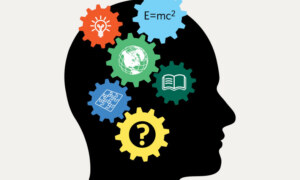Table of Contents
Frontotemporal Dementia (FTD) is a progressive brain disorder that primarily affects the frontal and temporal lobes of the brain. Unlike Alzheimer’s disease, which primarily impacts memory, FTD is characterized by changes in personality, behavior, and language. It is the most common form of dementia for people under the age of 60, yet it remains less known and often misdiagnosed. This in-depth article explores the causes, symptoms, diagnosis, treatment, and ongoing research related to FTD, providing a comprehensive understanding of this challenging condition.
What is Frontotemporal Dementia (FTD)?
Frontotemporal Dementia refers to a group of disorders caused by the progressive degeneration of the frontal and temporal lobes of the brain. These areas of the brain are responsible for important cognitive functions, such as decision-making, behavior, emotion, and language. When these brain regions deteriorate, it leads to significant changes in an individual’s personality, behavior, and ability to communicate.
FTD is unique in that it often affects younger individuals, typically between the ages of 45 and 65, although it can occur at an older age. The progression of FTD is generally faster than Alzheimer’s disease, with symptoms worsening over several years.
Types of Frontotemporal Dementia
FTD is not a single disease but rather a spectrum of disorders that can be categorized into three main types:
- Behavioral Variant Frontotemporal Dementia (bvFTD): This is the most common form of FTD, accounting for about 60% of all cases. It primarily affects the frontal lobes, leading to changes in personality, behavior, and judgment. Individuals with bvFTD may exhibit socially inappropriate behavior, lack of empathy, and impulsivity. These changes can be particularly challenging for caregivers and family members, as the person may no longer act like themselves.
- Primary Progressive Aphasia (PPA): This form of FTD primarily affects language abilities. There are two subtypes of PPA:
- Semantic Variant PPA: This subtype affects the temporal lobes, leading to a loss of word meaning. Individuals may struggle to understand or use specific words, although their speech may still be fluent.
- Nonfluent/Agrammatic Variant PPA: This subtype affects the ability to produce speech. Individuals may have difficulty forming sentences, and their speech may become hesitant or ungrammatical.
- FTD with Motor Neuron Disease (FTD-MND): In some cases, FTD is associated with motor neuron disease (MND), also known as amyotrophic lateral sclerosis (ALS). This form of FTD leads to symptoms of both dementia and ALS, such as muscle weakness, difficulty speaking, and changes in behavior.
Causes and Risk Factors
The exact cause of FTD is not fully understood, but it is believed to involve a combination of genetic and environmental factors. Approximately 40% of individuals with FTD have a family history of the disease, suggesting a genetic predisposition. Mutations in certain genes, such as the MAPT, GRN, and C9orf72 genes, have been linked to FTD.
Unlike Alzheimer’s disease, where age is the most significant risk factor, FTD primarily affects younger individuals. Other potential risk factors include a history of head trauma, although the link between head injury and FTD is not as well established as it is with other forms of dementia.
Symptoms of Frontotemporal Dementia
The symptoms of FTD can vary widely depending on which areas of the brain are affected. However, common symptoms include:
- Behavioral Changes: These are often the first and most noticeable symptoms of FTD. Individuals may exhibit socially inappropriate behavior, impulsivity, loss of empathy, apathy, and a lack of insight into their actions. These changes can be particularly distressing for families, as the person may no longer seem like themselves.
- Language Problems: As FTD progresses, individuals may experience difficulty with language. This can include trouble finding the right words, understanding speech, or constructing sentences. Over time, communication may become severely impaired.
- Movement Disorders: In some cases, FTD can lead to movement problems similar to those seen in Parkinson’s disease, such as tremors, stiffness, and difficulty walking. When FTD is associated with ALS, individuals may also experience muscle weakness and difficulty speaking.
- Cognitive Impairment: Unlike Alzheimer’s disease, memory problems are not typically the first symptom of FTD. However, as the disease progresses, cognitive functions such as planning, decision-making, and problem-solving can become impaired.
Diagnosis of Frontotemporal Dementia
Diagnosing FTD can be challenging, especially in the early stages, as its symptoms can be similar to those of other psychiatric disorders or dementias. A comprehensive evaluation typically includes:
- Medical History and Physical Examination: A detailed medical history and physical examination are essential to rule out other possible causes of symptoms.
- Neuropsychological Testing: These tests assess cognitive functions such as memory, language, attention, and problem-solving skills. They can help differentiate FTD from other forms of dementia.
- Brain Imaging: MRI or CT scans can reveal atrophy (shrinkage) in the frontal and temporal lobes, which is characteristic of FTD. PET scans may also be used to assess brain function and detect abnormalities in glucose metabolism.
- Genetic Testing: In cases where there is a family history of FTD, genetic testing may be recommended to identify mutations associated with the disease.
- Lumbar Puncture: In some cases, a lumbar puncture (spinal tap) may be performed to analyze cerebrospinal fluid for biomarkers that can help differentiate FTD from other neurodegenerative diseases.
Treatment and Management
Currently, there is no cure for FTD, and treatment focuses on managing symptoms and improving the quality of life. Treatment strategies may include:
- Medications: There are no FDA-approved medications specifically for FTD, but some medications may help manage symptoms. For example, antidepressants and antipsychotics can help address behavioral changes, while speech therapy may assist with language problems.
- Behavioral Interventions: Non-pharmacological approaches, such as cognitive behavioral therapy (CBT), can help manage behavioral symptoms and improve communication between patients and caregivers.
- Supportive Care: Caregivers play a crucial role in managing FTD. Support groups, counseling, and respite care can provide emotional and practical support to caregivers and families.
- Advanced Care Planning: As Frontotemporal Dementia FTD progresses, it is essential to have discussions about future care preferences, including legal and financial planning, as well as decisions regarding long-term care and end-of-life care.
Research and Future Directions
Research on FTD is ongoing, with scientists working to better understand the disease’s underlying mechanisms and develop effective treatments. Key areas of research include:
- Genetic Research: Researchers are studying the genes associated with FTD to understand how mutations lead to brain cell damage. This research could lead to the development of gene-based therapies.
- Biomarker Discovery: Identifying biomarkers for FTD could improve early diagnosis and allow for the development of targeted treatments. Biomarkers could include proteins in the blood or cerebrospinal fluid that indicate the presence of Frontotemporal Dementia FTD.
- Clinical Trials: Ongoing clinical trials are testing new medications and therapies that may slow the progression of Frontotemporal Dementia FTD or alleviate symptoms. Participation in clinical trials can provide patients with access to cutting-edge treatments and contribute to the advancement of medical knowledge.
Conclusion
Frontotemporal Dementia is a complex and challenging condition that affects not only the individual but also their family and caregivers. While there is no cure, early diagnosis and comprehensive management can help improve the quality of life for those affected. As research continues, there is hope that new treatments and therapies will emerge to better manage and, eventually, cure FTD.
Awareness and education about Frontotemporal Dementia FTD are crucial in supporting those affected by the disease and advancing the search for a cure. By understanding the symptoms, diagnosis, and treatment options, we can better support individuals with Frontotemporal Dementia FTD and their families as they navigate this difficult journey.
Read more about: 7 Stages of Frontotemporal Dementia





탑플레이어 포커 머니상은 안전하고 신뢰할 수 있는 포커 머니 거래 플랫폼입니다. 탑플레이어포커머니상 https://www.youtube.com/watch?v=XA2OPI55_eI
سورة مريم ١ – ١١ ادريس ابكر
I do believe all the ideas youve presented for your post They are really convincing and will certainly work Nonetheless the posts are too short for novices May just you please lengthen them a little from subsequent time Thanks for the post
Thank you for the auspicious writeup It in fact was a amusement account it Look advanced to far added agreeable from you However how can we communicate
helloI really like your writing so a lot share we keep up a correspondence extra approximately your post on AOL I need an expert in this house to unravel my problem May be that is you Taking a look ahead to see you
Só quero dizer que seu artigo é incrível A clareza em sua postagem é ótima e posso presumir que você é um especialista neste assunto Bem, com sua permissão, deixe-me pegar seu feed para me manter atualizado com as próximas postagens. Um milhão de agradecimentos e continue o trabalho gratificante
Your blog is a testament to your dedication to your craft. Your commitment to excellence is evident in every aspect of your writing. Thank you for being such a positive influence in the online community.
Hello Neat post Theres an issue together with your site in internet explorer would check this IE still is the marketplace chief and a large element of other folks will leave out your magnificent writing due to this problem
trezor.io/start
trezor.io/start
trezor.io/start
Olá, boa postagem, há um problema com seu site no Internet Explorer. Gostaria de testar este IE, ainda é o líder do mercado e uma boa parte de outras pessoas ignorará sua magnífica escrita devido a esse problema
I was suggested this web site by my cousin Im not sure whether this post is written by him as no one else know such detailed about my trouble You are incredible Thanks